Photo

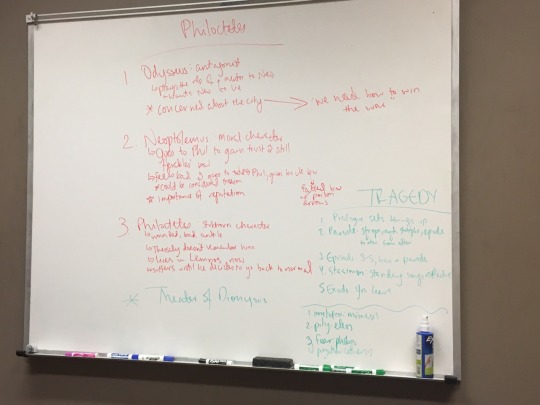
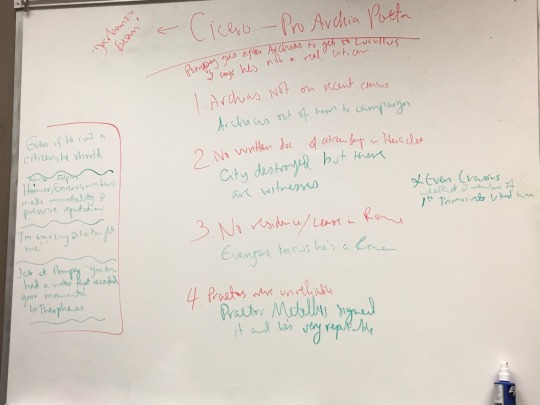
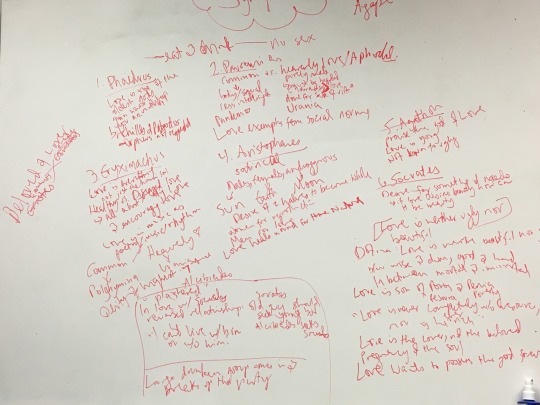
Above: Honors Student Slips into Insanity | ca. 2016
6 notes
·
View notes
Photo
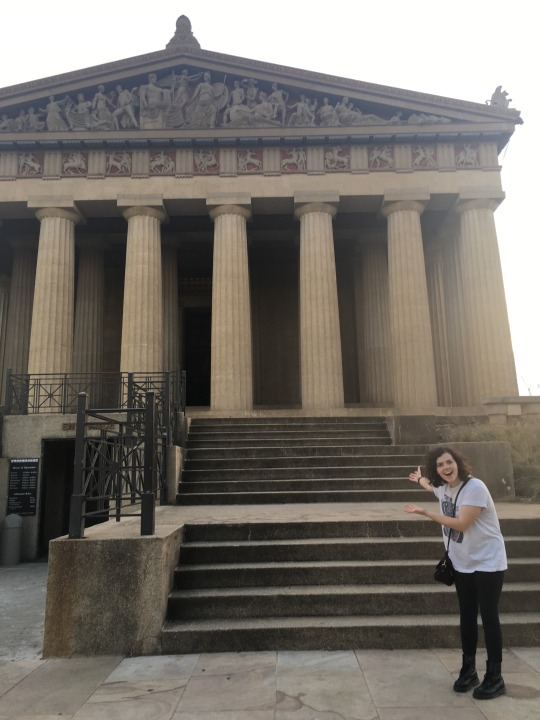
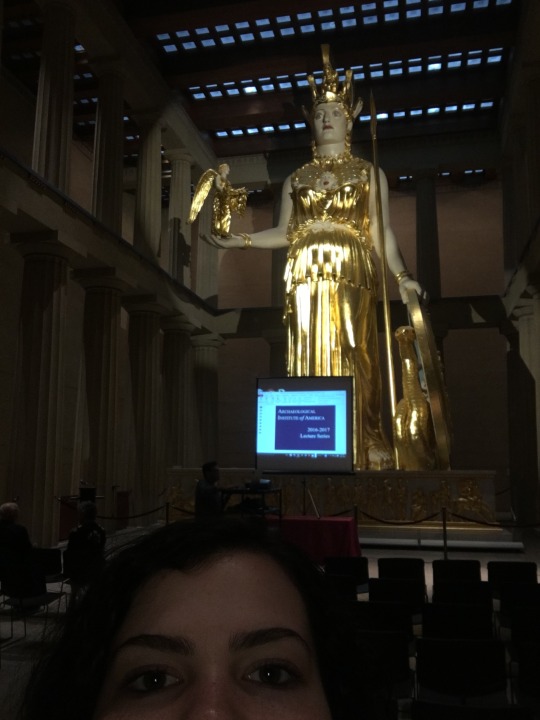

Above: Three-part series depicting a teenage girl embracing her inner Athena, c. 2016
Keep reading
4 notes
·
View notes
Photo
A cella is like a naos, and is the inner chamber of temples. This is where the two goddesses’ worship areas were, which is why that connects with the palindrome. The temple is located on the slope of Velian Hill in Rome. I’m pretty certain that Hadrian intended to have this double platform for the temple so it would look even grander. Also, I did not think about discussing the structures around the temple, but the platform had a colonnade and another row of columns on opposing sides.
Thanks for the feedback!
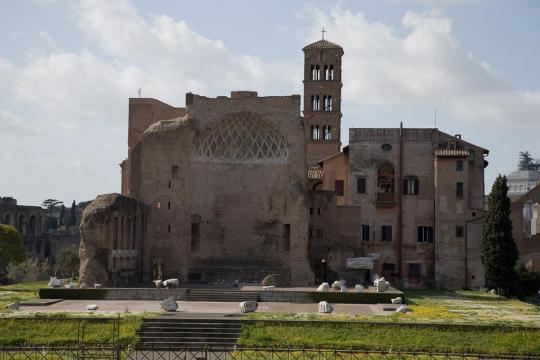


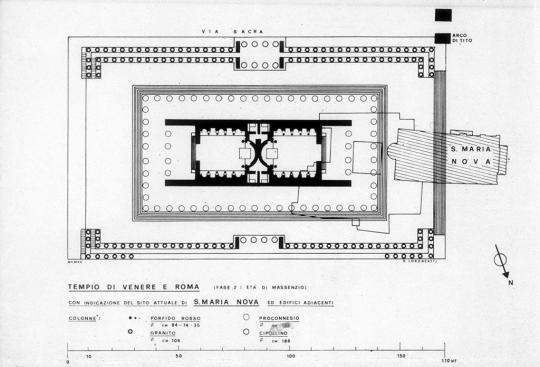
Temple of Venus and Roma, 2nd century AD
Keep reading
2 notes
·
View notes
Photo
Great job discussing this building, Claire! I think you covered the features and purpose of this Insula very well, but I wonder about the inhabitants. Would the tenants here be a part of a higher class than those in other buildings because of its prime location and better features, or would they be like other tenants? Also, why would other Insulas not have included a courtyard or false balconies if this was such a great feature?
Also, and this is no critique of your post, but I wonder what kind of stores were in the bottom. I like to think they were olden day Hot Topics or something.
Once again, awesome job!
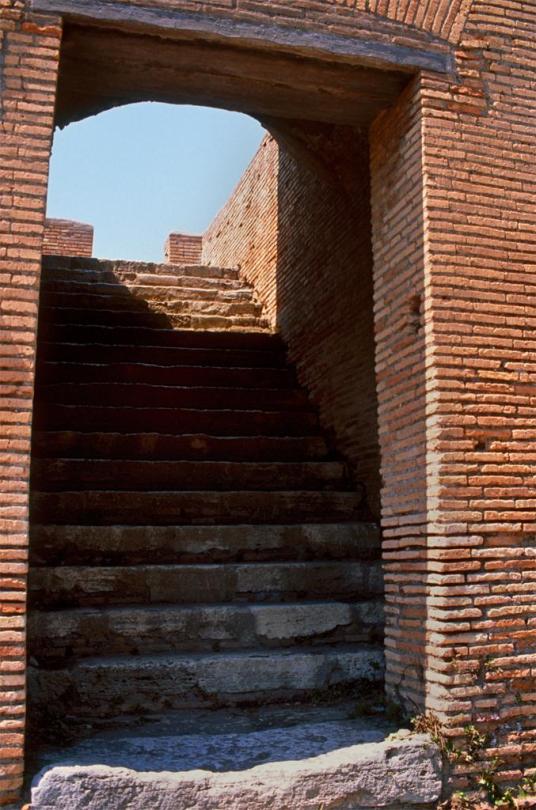

The Insula of Diana, built around 150 CE, is one of the best-preserved apartment blocks of Ancient Rome. The building is located in Ostia, “Rome’s first colony”. There are two stories of the building still standing, but historians predict there were once five. The ground floor was reserved for shops and the nicest apartments, while the rest of the floors consisted of increasingly less spacious residential units. In Roman tradition, the higher the floor, the smaller the apartment, so the only appartments to remain standing are likely the nicest. Another reason why the higher-floor apartments would be less popular is because of the amount of stairs one would have to climb to get home. One flight of stairs is pictured above.
On the exterior, one can see the beautiful “false balconies” that may have been used by firefighters as “platforms from which to extinguish fires”. On the inside of the building lies a courtyard with an open ceiling. This was an essential source of light and air for those living in rooms without exterior windows. This Insula was probably very popular, not only because of the added access to light, but also because of its ideal location (near the forum), its access to a latrine (a place to go to the bathroom) and its access to a cistern (from which residents could get water). While I would much rather live in a domus, if I had to choose an Insula to live in, this would be it!
House of Diana. 2nd century AD. Ostia Antica, Italy. Architecture. Available from: Artstor.org. Accessed 1 December 2016.
Insula of Diana, staircase leading from the street to the upper floors. 2nd century AD. Ostia, Italy. Architecture. Available from: Artstor.org. Accessed 1 December 2016.
Kleiner, Fred S. A History of Roman Art. Wadsworth, Cengage Learning. Boston, MA: 2010. 208-209.
3 notes
·
View notes
Text
Art of Greece and Rome 3.10
Question:
If Jewish traditions were allowed and it was okay at first for people not to sacrifice to the emperor, why did that change? I’m assuming a difference in who was emperor at the time, but it seems like a huge jump to two extremes.
Comment:
I find it so sad that we have lost pieces of the ancient Greek and Roman world. With technology today, even if a sculpture or painting is destroyed, there (at least most of the time) exists a digital copy. The Roman empire didn’t have this, though, and with some paintings that were lost or statues that were destroyed for metal or lime, no record exists. I wish we had time machines to go back and see what art really would have been like then.
#AskDelphi16#I just want to see these things in color up close#Also the tiny dots on those last two paintings had me freaked out#Roman art#Greek art
0 notes
Photo




Temple of Venus and Roma, 2nd century AD
This temple, which was designed by Emperor Hadrian, is located in Rome, Italy. Construction began in 121 AD and ended under Antoninus Pius. It is one of the larger temples in Rome and includes individual worship halls for both goddesses. Although it is as large as the Forum of Augustus, it is unknown if the temple was as busy.
The temple stands on a low platform and is partially surrounded by two, long colonnades. Hadrian also included a dome in the design, which allows for more space in the temple’s “focal point” center. This has been considered a reflection of the belief of Rome being “center of the universe.” One of the more interesting aspects about the Temple of Venus and Roma is the cella’s interior. Instead of an inner and outer chamber, there are two cellas (#4) which share one wall. This design mimics the palindrome created by the two goddesses (Venus’ name can be changed with Amor, as she is considered the goddess of Love).
This design was criticized by Apollodorus of Damascus (Trajan’s architect), but historians today describe it as unusual and unique (most likely because of its double cella feature). Apollodorus also criticized Hadrian’s inclusion of the dome (even going so far as calling it a pumpkin dome). Hadrian was speculated to have put Apollodorus to death for his criticisms, but that is not certain.
This temple is massive, beautiful, and interesting, and is a testament to Hadrian’s personality and style while touching on certain Roman ideas.
Bibliography:
Alcher, Peter. Rome Alive: A Source Guide to the Ancient City. Bolchazy-Carducci, 2004.
"Hadrian." In Ancient Greece and Rome: An Encyclopedia for Students, edited by Carroll Moulton, 129-130. Vol. 2. New York: Charles Scribner's Sons, 1998. Gale Virtual Reference Library (accessed November 28, 2016).
J. G. C. A. The Journal of Roman Studies 19 (1929): 109. doi:10.2307/297333.
"Roman Architecture." In Arts and Humanities Through the Eras, edited by Edward I. Bleiberg, James Allan Evans, Kristen Mossler Figg, Philip M. Soergel, and John Block Friedman, 25-37. Vol. 2, Ancient Greece and Rome 1200 B.C.E.-476 C.E. Detroit: Gale, 2005. Gale Virtual Reference Library (accessed November 28, 2016).
Rome. Temple of Venus and Rome. Plan. Maxentian phase. Plans of Ancient and Medieval Buildings and Archaeological Sites (Bryn Mawr College). Bryn Mawr College. Available from: ARTstor (accessed November 28, 2016).
Temple of Venus and Roma. 121 AD. Rome, Italy. Available from: ARTstor (accessed November 28, 2016).
2 notes
·
View notes
Text
Confessions 3
Question:
Did the men Augustine speaks negatively about in part VI retaliate to his comments, or would they have tried to remain anonymous (if they were, in fact, anonymous)?
Comment:
Some parts of this book seem very confusing and hard to understand when looking at it from the viewpoint of someone who never knew God or learned teachings in Christianity. I found that part IX seemed the most confusing (even as someone who grew up in church, I found parts to be a little hard to grasp at first), but I like that in part X, Augustine addresses that he did not understand IX’s concepts as a nonbeliever.
0 notes
Photo
Thank you for the review!
By “breathing room,” I meant the perceived space and atmosphere of the room. It looks larger and more open, rather than a stifling, claustrophobic room.
Also, from what I remember about the book, the Greeks did not devote many of their pieces to depictions of nature! Most were of people, buildings, or events.
Finally, I think that it was most likely for aesthetic purposes. If I were going to display such a large mural, I would want it to look lively and lush. Having dead flowers (or even flowers that were not in bloom) would not be as “pretty” and may bring a more negative response to those viewing the piece.
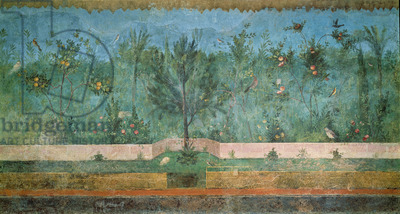
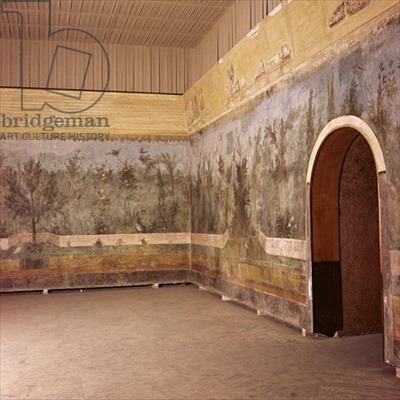

Gardenscape from the Villa of Livia, Primaporta, ca. 30-20 BCE
Keep reading
2 notes
·
View notes
Text
Confessions 2
Question:
Did Augustine receive any punishment for stealing the pears or was he allowed to do so without any repercussion?
Also, this crime seems pretty small to me; would it have been a bigger deal during his time period or was it relatively small in the grand scheme of other crimes then, as well?
Comment:
I find it interesting that Augustine’s success is so high in importance that it pushes even his devout mother to throw morals to the wind during his adolescence. You would think that Augustine’s mother would have tried to find a balance between worldly success and success in character.

0 notes
Text
Rome 4 & Confessions 1
Question:
Would Augustine’s Confessions have been released to the public or were these writings something he would write down when speaking to God through prayer?
Comment:
I absolutely love the sass Mary Beard gave in the episode when speaking about some of Paul’s writings. Whenever she said, “that’s never going to be my motto” to the “man is head of the household” statement, I was like OH SNAP!
1 note
·
View note
Photo
I think you did a great job discussing the picture of Dionysus, but what about the other pieces of the mural? On the left wall, there is another scene depicted with the same framing detail as Young Dionysus with the Nymphs of Nisa. Did you happen to see any information on this piece, and if so, does the story connect?
Other than this, great job! I love that you discussed the features of a Second Style painting because it is so reliant on perspective in creating a nice piece. Also, I would never have caught the onlookers’ cautious facial expressions, but that aspect really captures the full story of a newborn god.
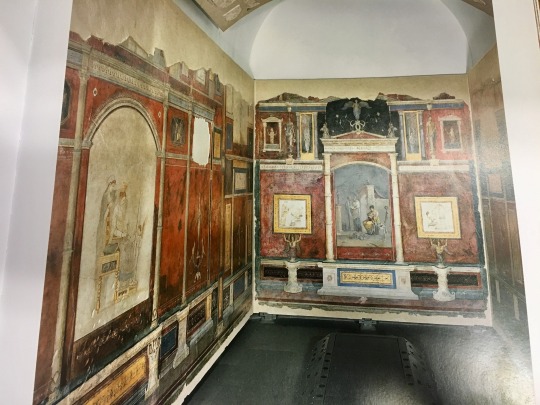
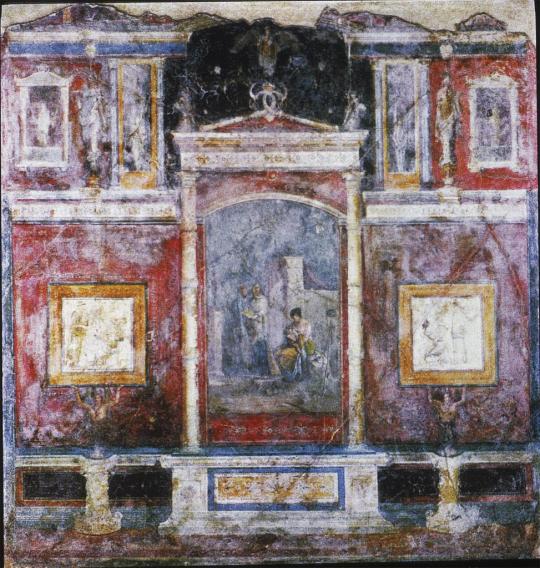
Wall Painting in Bedroom B, Villa Farnesina, Rome, 21 BCE
This wall painting was found in a Villa believed to have been built by Agrippa to celebrate his marriage to Emperor Augustus’s daughter Julia. It is dated to the transitional period the Roman Republic and the Imperial Era, circa 21 BCE, and was excavated in the capital.
This wall painting was found in one of the bedrooms in the southern wing of the villa. The painting is in the Second Style. Second style consisted of using illusionary techniques to suggest the confines of the room were larger or even non-existent. To achieve this, painters had to master the idea of depth, something that can be easily seen in the first photo. The room is only a rectangle in shape, but the use of depth and perception in the paintings add an openness to the actually small room. This use of depth is very visible in this smaller painting below:
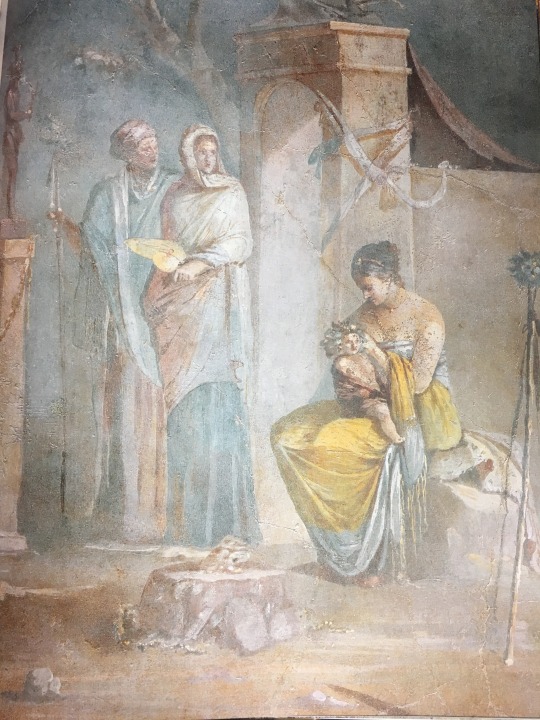
This painting is in the center of the far wall of the bedroom. It is a scene of Young Dionysus with the Nymphs of Nisa. The painting is extremely detailed when looked at up close. The infant god is distinguished by the laurel around his head. The nymph holding Dionysus’s expression is one of compassion and caring, while the two onlookers seem cautious and perhaps afraid of the baby, recognizing him as a god. These realistic details were imperative to Roman art and painting, regardless of the Style the work was in.
First image - Romano, Luciano. Bedroom B. View of the left wall of the antechamber and the rear wall of the sleeping alcove. Mazzoleni and Pappalardo, Domus, 211.
Second image - Rome: Villa of the Farnesina (beneath): Cubiculum B - wall painting. ARTStor Slide Gallery. http://library.artstor.org/library/#3|search|1|roman20painting20villa20farnesina|Multiple20Collection20Search|||type3D3126kw3Droman20painting20villa20farnesina26id3Dall26name3DAll20Collections26origKW3D||4|, (accessed November 16, 2016).
Third image - Romano, Luciano. The Villa Farnesina: Detail of the painted decoration in Bedroom B. View of the rear wall of the sleeping alcove. Mazzoleni and Pappalardo, Domus, 229.
Woodford, Susan. The Art of Greece and Rome. Cambridge, UK: Cambridge University Press, 2004.
Mazzoleni, Donatella and Pappalardo, Umberto. Domus: Wall Painting in the Roman House. Translated by J. Paul Getty Trust. Los Angeles, CA: Getty Publications, 2007.
2 notes
·
View notes
Text
Art of Greece and Rome 3.9
Question:
How did the Romans control temperatures enough to have cold, warm, and hot rooms? Was it just a specific amount and placement of fire?
Comment:
I find it odd that amphitheaters are supposed to be a fully enclosed area (for example, the Colosseum) when amphitheaters now look more like Greek theaters. I wonder what made this discrepancy in structure vs. name occur.
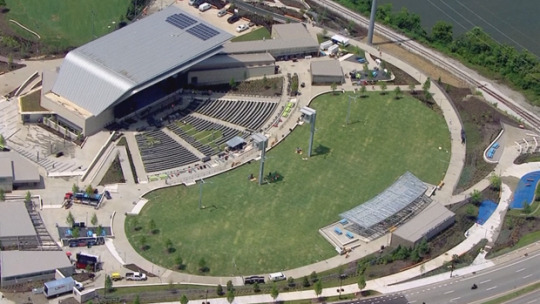
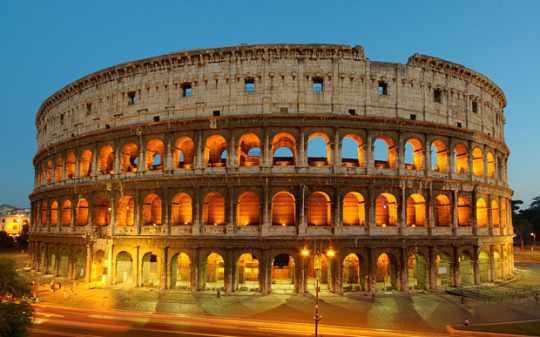
Top: Ascend Amphitheater | Bottom: Colosseum
0 notes
Photo



Gardenscape from the Villa of Livia, Primaporta, ca. 30-20 BCE
This mural comes from a villa in Primaporta and represents second style paintings. The entire room was painted to look like it was surrounded by a garden. The painter achieved the illusion of depth by making the foreground bolder and more defined than the background, which is more reliant on smudges of color than sharp forms. This mural, as it is completely about nature, makes the room seem more open and spacious and increases the assumed "breathing room." The painter did not focus on putting many architectural aspects shown in some first and third style paintings. The only structures depicted are a fence in the foreground and another fence further away.
This gardenscape is very well done and showcases the painter's skill level. It is also aesthetically pleasing and relies on symmetry and vibrant colors to help make it look even more pleasing. The tree in the first picture stands as the midpoint of the wall and is surrounded by smaller fruit trees and birds on both the left and right sides. On the other wall in the second picture, there is another tree which bisects the area between the corner and archway. There are also more trees depicted which are tall enough to shoot out from the archway, creating more height to the room.
The Villa of Livia boasts a vibrant and lively mural which offers a great difference from Greek paintings, which do not focus on nature.
Bibliography:
"Garden Paintings from the So-called 'Villa of Livia', Primaporta, Rome, C.20 BC (fresco)."
Kleiner, Fred S. A History of Roman Art. Enhanced ed. Boston, MA: Wadsworth, Cengage Learning, 2010.
Ramage, Nancy H., and Ramage, Andrew. Roman Art : Romulus to Constantine. 4th ed. Upper Saddle River, N.J.: Pearson Prentice Hall, 2005.
Roman. "View of a Garden, from the Villa of Livia at Primaporta, C.20 BC (fresco)."
2 notes
·
View notes
Text
Meet the Romans 1&2
Question:
What did they do with the animals after the events in the Colosseum? Were they killed (if they hadn’t been already) or sent somewhere else?
Comment:
I love how touchy Mary Beard is to everything. From when she was looking through the gladiator's mask, to when she played with the tongue depressor, I was just waiting for someone to jump in and say “oh no don’t touch that.”
Also, did anyone else cringe when she was touching all over the public toilet?

1 note
·
View note
Text
Aeneid 9-12
Question: In the beginning of Book 9, Nisus and Euryalus are told to have one love that unites them and that Euryalus was showing the first hints of a beard. This has characteristics of the lover/beloved relationship we talked about - is this what their relationship was, or was that just coincidence?
Comment: There's such a battle between how women are represented in Book 11. Camilla is described as a warrior and proves her talents in battle in one moment, and in the next minute, Tarchon chastises the Tyrrhenian for letting a woman defeat them as if that makes them cowards.
Like, come on, Virgil. Make up your mind.
#AskDelphi16#Camilla is the coolest and I wanna be her#Brb posting up for battle#Aeneid#Camilla#Virgil
1 note
·
View note
Text
Aeneid 6
Question:
Because Misenus is told to have died “before his time” in line 209, does that mean he also had to wait in a limbo state for a lock of his hair to be given to Proserpina?
Comment:
I’m amazed by the imagery and emotions in book 6. Lines 126-132, which discuss the Sibyl’s “frenzy,” were so intense and left me feeling like I had just watched the event unfold. I found myself getting lost in this book, but in a great way.
2 notes
·
View notes
Photo
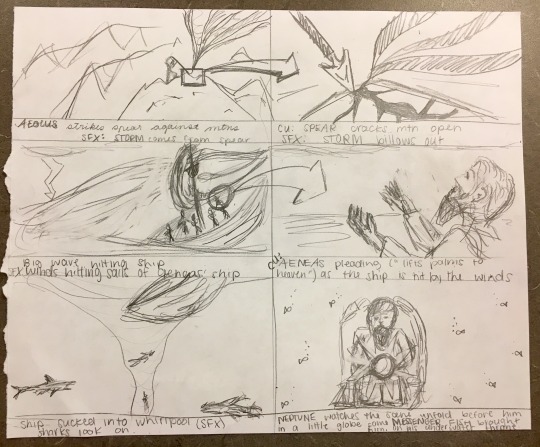
Aeneid, lines 98-157
In this scene, Aeolus (bribed by Juno) creates a storm that wrecks Aeneas’ fleet. This sends Aeneas into despair as winds create even more devastation. The East and South Winds create a whirlpool that throws men overboard, along with Trojan finery and shields. It is not until Neptune hears about what is going on that they are saved from the storm.
@kayleigh0301 @sabrina8825 @gaiaddict @nicoleboulris
3 notes
·
View notes